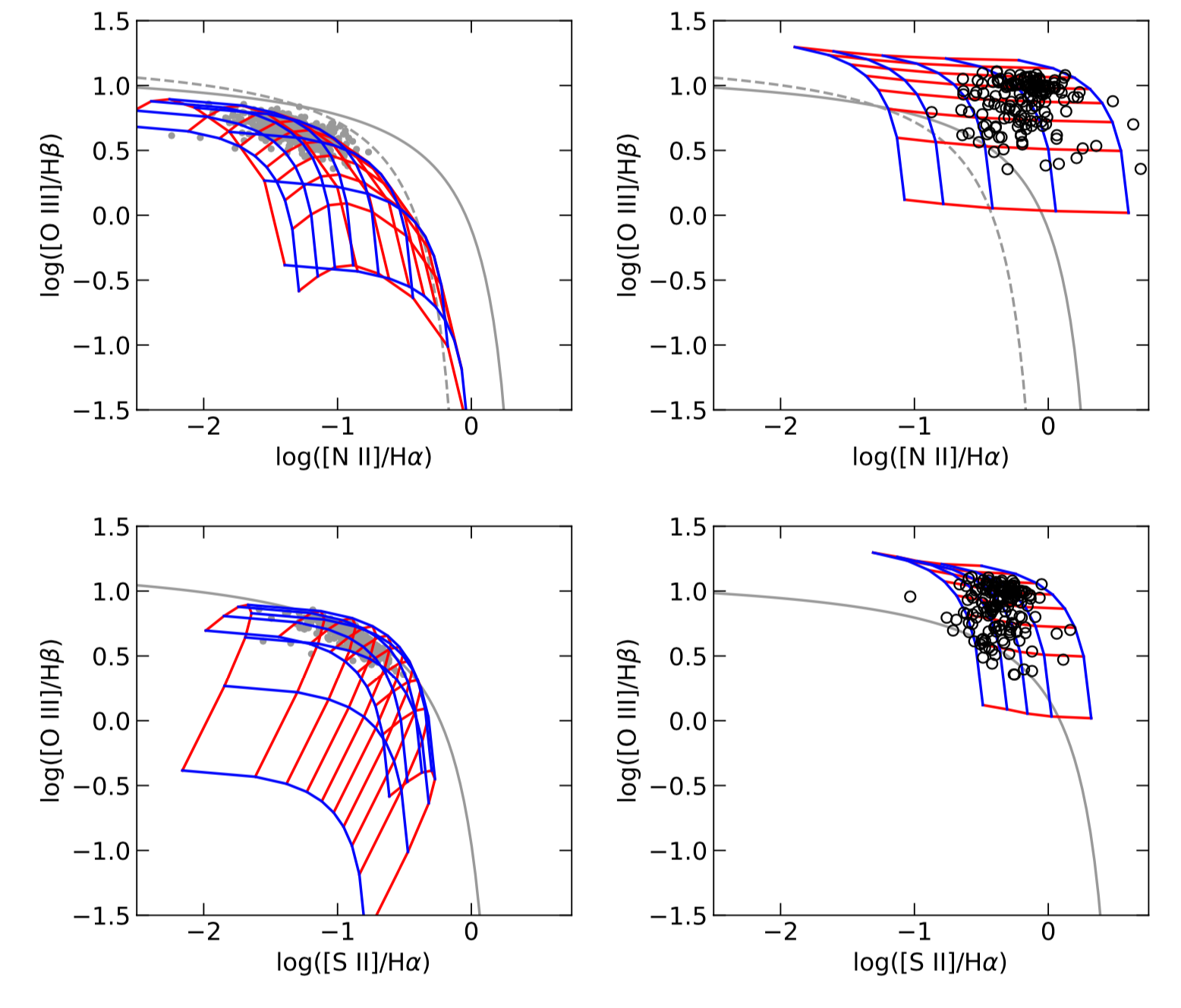Research
My research interests focus on the use of spectroscopy to investigate the relationship between a galaxy's ISM and energetic phenomena such as young stellar populations and AGN. I use rest-frame UV and optical spectroscopy from JWST, HST, the SDSS, and other facilities to study line-emitting nebular gas in galaxies. Much of my analysis incorporates nebular diagnostics, photoionization models, and stellar population synthesis to infer fundamental properties of the ISM, stars, ionizing radiation, and ionized gas kinematics in other galaxies. I collaborate with astronomers across the world, as a leader of the LzLCS team but also through connections made at international conferences and (soon) the WEAVE science team.Below, you can read about some specific projects on which I am actively working. A list of my recent publications can be found on the NASA ADS/ABS

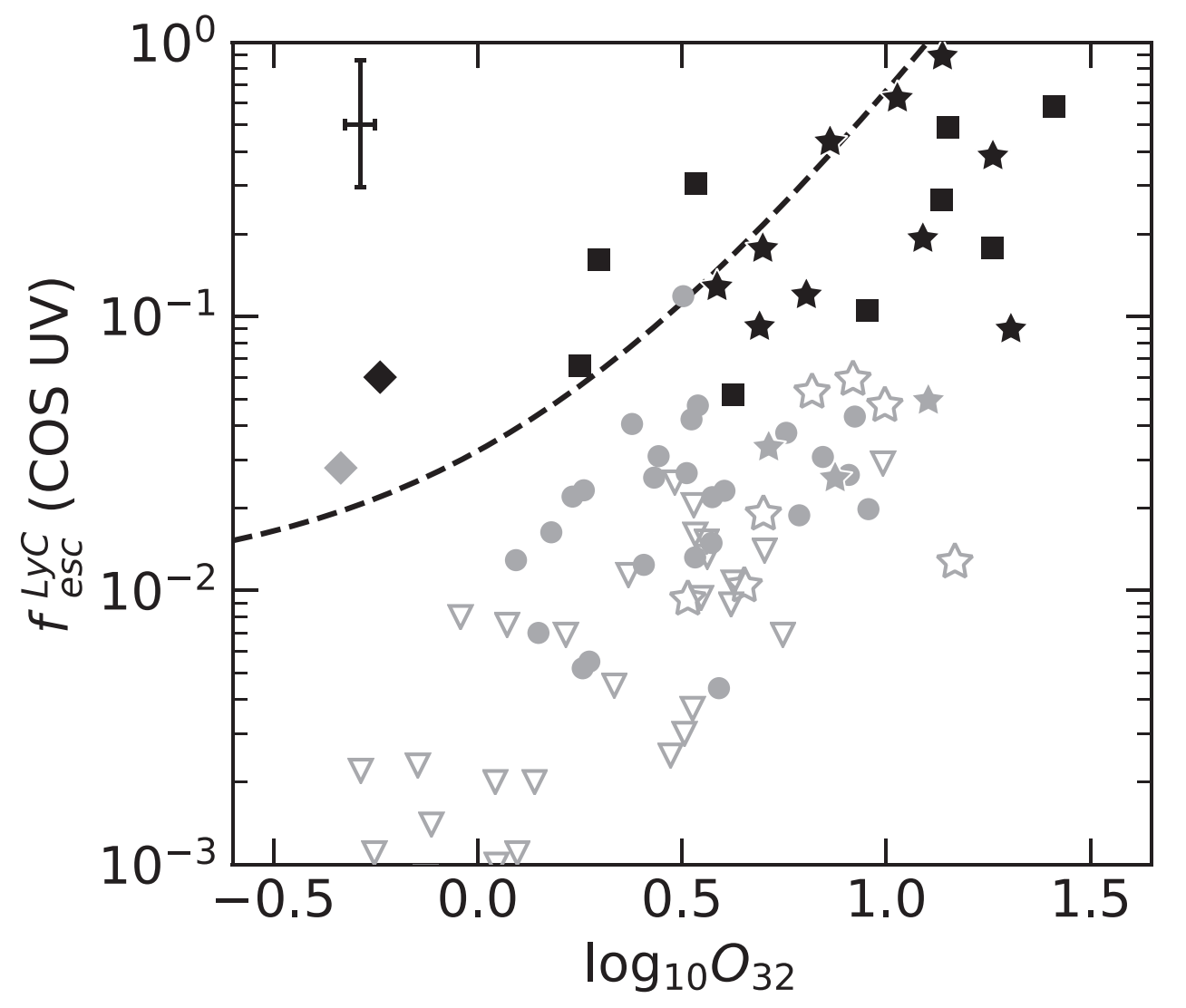
Lyman Continuum Escape
I am one of the leaders of the Low-redshift Lyman Continuum Survey, a large HST/COS program (PI Anne Jaskot) aimed at measuring the Lyman continuum (LyC) in the largest sample of z~0.3 galaxies to date. Through my role in the LzLCS, I have fundamentally changed our understanding of Lyman continuum escape by (i) providing a foundational reference sample spanning a very wide parameter space, (ii) testing Lyman continuum diagnostics (like O32 as shown on the left), and (iii) to investigate the underlying mechanisms of ionizing photon escape. These results are critical to providing empirical constraints on the origins and mechanisms of cosmic Reionization. Direct observations of LyC escape at z>6 are not physically possible; making my results from the LzLCS the primary basis by which we can empirically assess the physical origins of cosmic Reionizaiton.
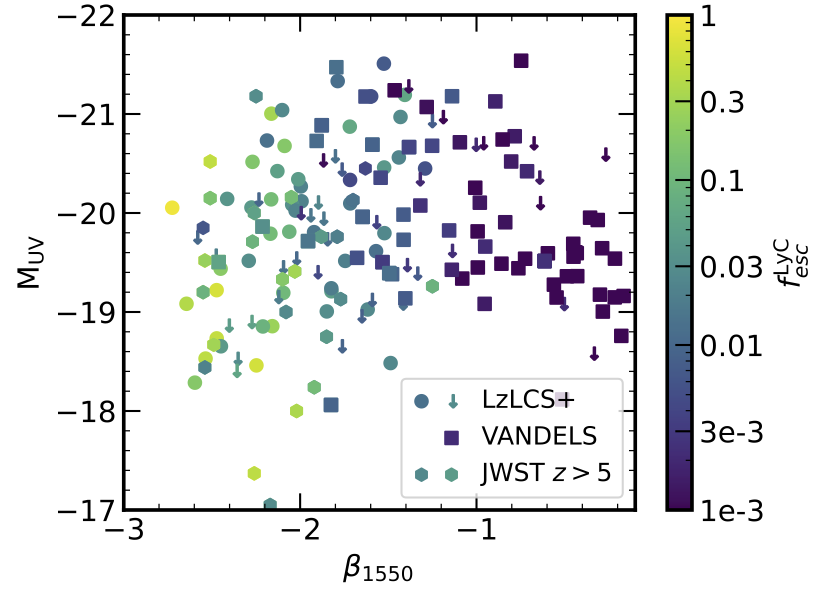
Galaxies and Reionization
I am applying low-redshift results from the LzLCS to galaxies at z>2. With Fergus Cullen, I am using measurements from VLT/VIMOS+KMOS and Keck/MOSFIRE spectra of a subset of galaxies in VANDELS (PIs McLure and Pentericci) to infer statistically robust estimates of LyC escape fractions. Using calibrations of the results from z = 0.3 and z=2.5-5, I am assessing the new JWST samples of galaxies at z>6 to determine their roles in Cosmic Reionization and whether they imply rapid or prolonged Reionization histories. Preliminary results from UV slope analysis suggest that all galaxies across the UV luminosity function are involved and that Reionization occurs gradually.
AGN and Star Formation in Low-mass Galaxies
I use IFU, SDSS, and long-slit spectroscopy to investigate the relationships between AGN,
star formation, and their host galaxies by analyzing the nebular emission line
properties, including flux ratio diagnostics like the BPT, nebular diagnostics,
and line profile shapes. I use many tools in these analyses, including PyNeb,
MAPPINGS, CLOUDY, and a variety of numerical methods. My research is novel in that
I have developed new techniques for analyzing (i) ionized outflows traced by emission
lines, (ii) "composite" or ambiguous emission line flux ratios, and (iii) very high
ionization emission lines like He II 4686 and [Ne V] 3426. Such tools will be key to
understanding the effects of AGN and young stellar populations on their host galaxies.
My spectroscopic studies of line-emitting galaxies establish the tools and
physical insight necessary to understand the effects that AGN and star formation have
on one another and, ultimately, the history and future of their host galaxies.
Here, I depict my own line profile model for galactic outflows
as traced by the [O III] 5007 nebular emission line and a comparison of ionizing SEDs from an upcoming paper by a mentee.
For these projects, I collaborate with
Ed Moran (Wesleyan University),
with whom I also mentor Master's students and directly assist with their final thesis projects.
![[O III] outflow line profile](assets/images/outflowO3.png)
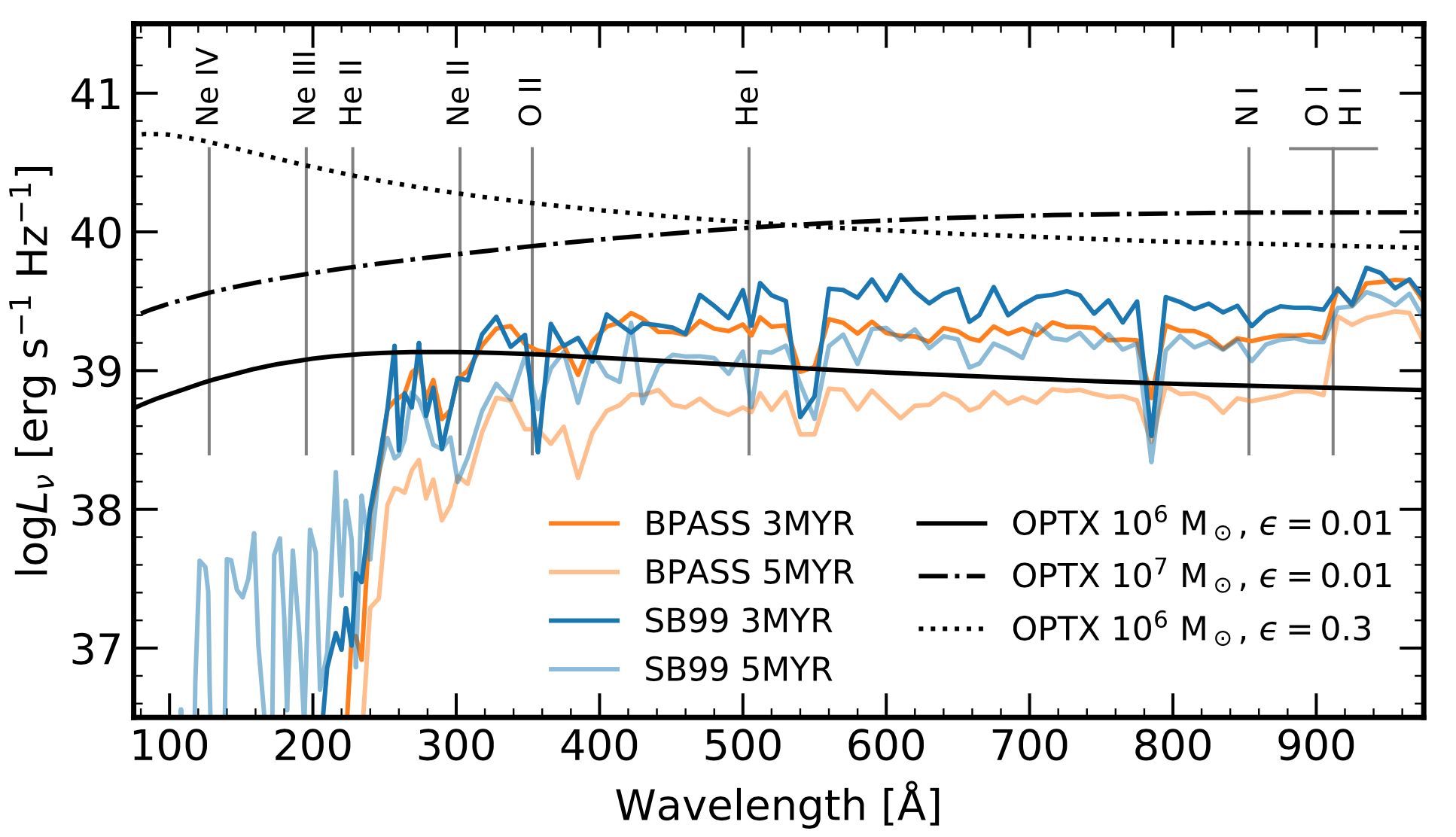
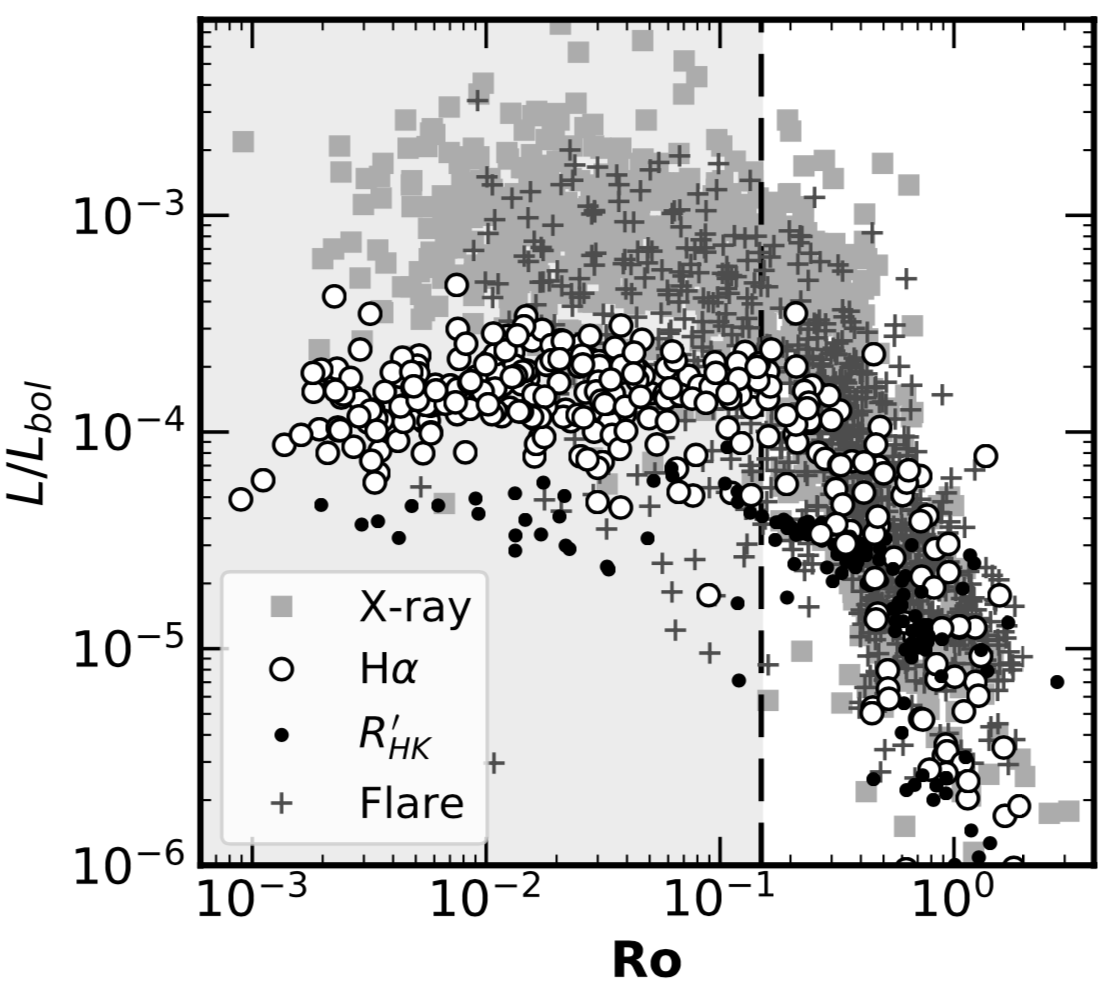
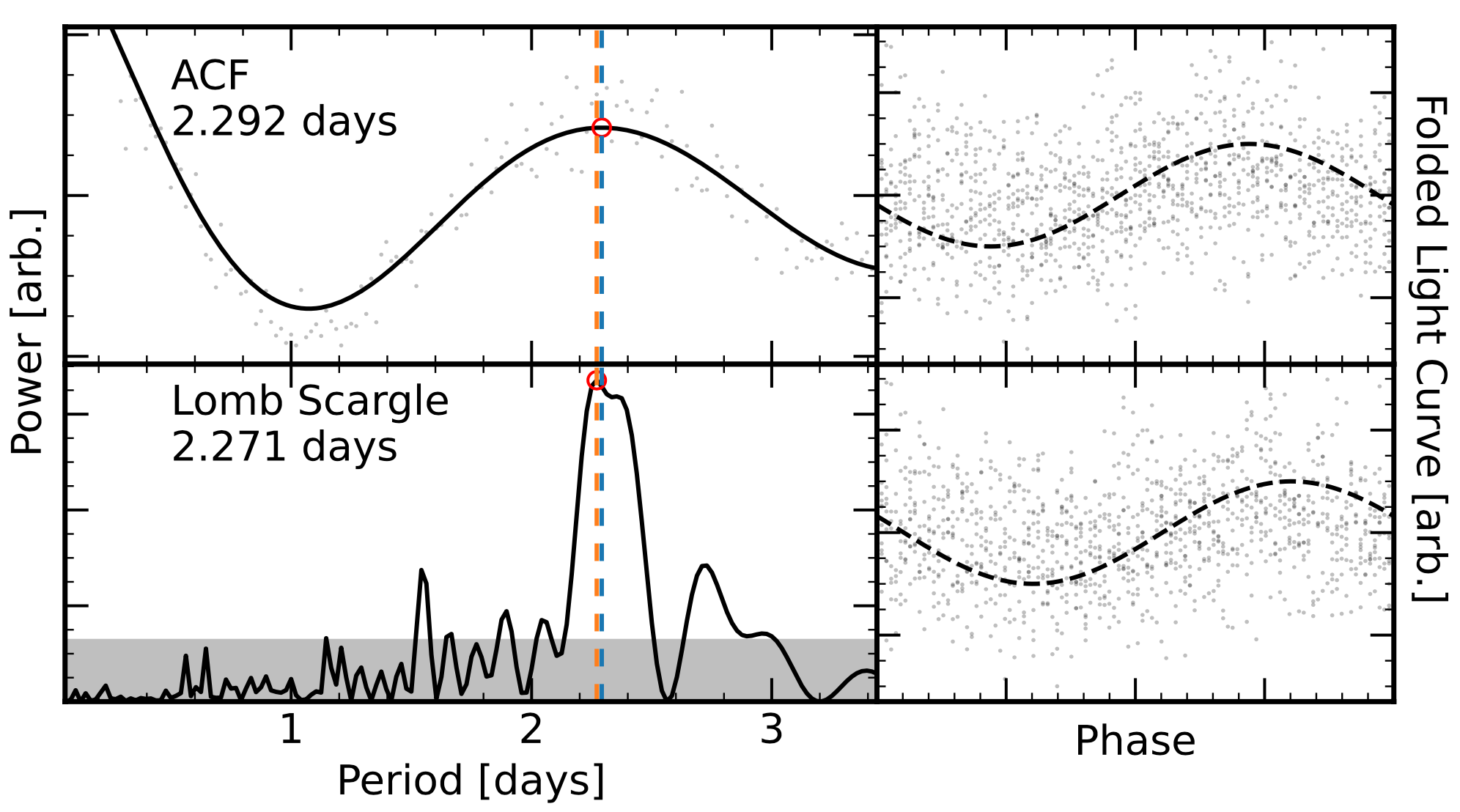
Activity in Low-Mass Stars
Inspired by a graduate course on the astrophysics of stellar interiors, I started a research group to investigate and develop novel diagnostics of the dynamos and structure of low mass (< 1 Msun) stars using Gaia, 2MASS, Kepler, and TESS photometry. I work with two other PhD candidates, Sandra Bustamante (UMass) and Aylin Garcia Soto (Dartmouth), as well as rising graduate student Chase Alvarado-Anderson (Stanford). With this team, I use time series and multivariate statistical analysis tools to develop a novel method for gaining insight into the relationships between stellar structure and dynamos, which has strong implications for exoplanet habitability. Specifically, constraining the mass at which stellar activity due to dynamos and interior structure will determine the mass regime in which exoplanets are too irradiated by stellar radiation to support life. Here, I show a variety of stellar activity indicators as a function of the Rossby number Ro = rotation period / convective cycle time to illustrate the empirical relationship between stellar structure, dynamos, and activity. Also depicted is a demonstration of various time series analysis tools used to measure stellar rotation, a key indicator of magnetic activity.
AGN Chemical Abundances
I study the relationships between nebular emission lines,
chemical abundances, and physical properties like temperature
and density in active galactic nuclei (AGN). Currently, I collaborate with
Oli Dors
and others on the abundance patterns in nearby Seyfert galaxies,
including the temperature structure of the AGN narrow-line region
and possible effects of shocks. Better understanding of the chemical abundances
of the ISM in AGN will provide new and crucial evidence regarding the metal enrichment
and baryonic in/outflow history in galaxies, including demonstrating whether AGN
are in some way influencing or influenced by their host galaxies.
To the right, I illustrate a method for interpreting
nebular emission line spectra by predicting BPT-VO flux ratios using chemical abundances
and ion fractions for both AGN and star-forming galaxies (no photoionization models involved).
For details on this sort of analysis, see my paper.
